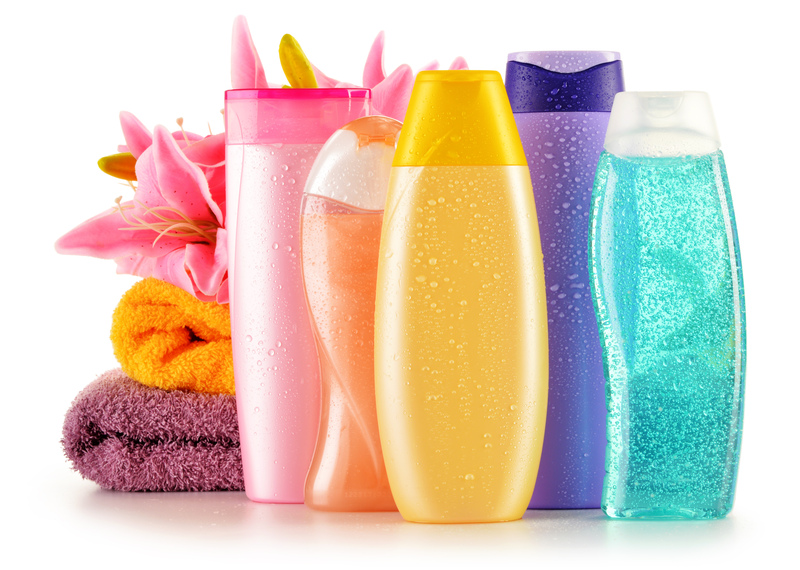Breath of Fresh Air: Why Air Quality Matters in Residential and Commercial Spaces
Posted on 27/08/2025
Breath of Fresh Air: Why Air Quality Matters in Residential and Commercial Spaces
Clean air is vital to our health, wellbeing, and overall productivity. Whether at home or at work, the quality of the air we breathe can significantly influence our mood, focus, and physical health. In today's modern environments, maintaining optimal air quality in residential and commercial spaces is not just a luxury--it's a necessity. This comprehensive article explores why air quality matters, its profound effects, and the top methods for ensuring a breath of fresh air in your everyday spaces.
The Importance of Indoor Air Quality in Modern Life
Did you know that on average, people spend up to 90% of their time indoors? This makes the air we breathe inside our homes, offices, schools, and commercial buildings all the more significant. Unlike outdoor air, which is regularly dispersed and purified by wind and rain, indoor air can accumulate pollutants, allergens, and contaminants rapidly.
- Residential air quality impacts your family's health and comfort.
- Commercial air quality affects employee productivity, customer satisfaction, and can even have legal and financial ramifications.
- Poor indoor air quality is linked to various health issues, including respiratory problems, allergies, and cognitive decline.
Research on Indoor Air Pollution
Several studies conducted by the Environmental Protection Agency (EPA) and World Health Organization (WHO) reveal that indoor air can be up to five times more polluted than outdoor air. With so many indoor air pollutants--from dust mites and pet dander to volatile organic compounds (VOCs), mold, and even outdoor car exhaust--the need to monitor and enhance air purity in all spaces becomes clear.

Why Air Quality Matters in Residential Spaces
Your home should be your fortress of comfort and safety. Guaranteeing pristine residential air quality isn't just about eliminating unpleasant odors or dust--it's about ensuring the safety, health, and happiness of every household member, from infants to seniors.
Common Sources of Indoor Pollutants in Homes
- Mold and Mildew: Thrive in damp areas like bathrooms and basements.
- Dust and Allergens: Accumulate in carpets, bedding, and soft furnishings.
- Volatile Organic Compounds (VOCs): Emanate from paints, cleaning supplies, air fresheners, and some furniture.
- Combustion Pollutants: Include carbon monoxide and nitrogen dioxide from gas stoves or fireplaces.
- Pollen and Outdoor Contaminants: Enter through poorly sealed windows and doors.
Health Impacts of Poor Indoor Air in Homes
Exposure to household pollutants can trigger a range of short- and long-term health problems, such as:
- Asthma attacks and irritation
- Allergic reactions
- Eye, nose, and throat irritation
- Fatigue and headaches
- Long-term effects: Chronic respiratory diseases, heart disease, and even cancer
Children, elderly individuals, and people with preexisting health conditions are particularly vulnerable to the effects of poor air quality.
Why Air Quality Is Crucial in Commercial and Office Spaces
Clean air isn't just a residential concern. In the realm of business, air quality in commercial spaces--including offices, retail outlets, schools, hotels, and warehouses--plays a pivotal role in organizational success and employee welfare.
Productivity and Cognitive Performance
A breakthrough Harvard study in 2015 found that workers in green-certified offices with good air quality performed 61% better on cognitive tests compared to those in conventional buildings. Enhanced air purity translates to sharper focus, improved problem-solving skills, and greater job satisfaction.
Occupant Health and Absenteeism
- Lowers sick days: Employees working in spaces with optimal air quality report fewer sick days due to respiratory infections, allergies, and migraines.
- Boosts morale and retention: A healthy work environment encourages loyalty and satisfaction.
- Reduces the risk of Sick Building Syndrome (SBS): Symptoms such as headaches, nausea, and eye irritation are common in buildings with inadequate ventilation and high levels of pollutants.
Legal and Economic Advantages
Improved commercial air quality can prevent costly lawsuits and compensation claims related to poor working conditions. It also enhances a business's reputation, making it more attractive to clients and potential employees.
Key Pollutants Impacting Air Quality Indoors
Understanding the primary contaminants that threaten residential and commercial air quality helps in devising effective mitigation strategies.
- Particulate Matter (PM2.5 and PM10): Tiny particles from dust, smoke, construction, and industrial materials. They can penetrate deep into the lungs, causing respiratory and cardiovascular issues.
- Volatile Organic Compounds (VOCs): Common in paints, solvents, cosmetic products, and office equipment. Chronic exposure is linked with headaches, liver damage, and cancer.
- Biological Contaminants: Such as mold, bacteria, viruses, pollen, and pet dander. These trigger allergies and infectious diseases.
- Carbon Monoxide (CO) and Nitrogen Dioxide (NO2): Emitted from fuel-burning appliances. High levels are life-threatening.
- Radon Gas: A naturally occurring radioactive gas that can seep into buildings from the ground, increasing lung cancer risk.
How to Improve Air Quality in Residential and Commercial Properties
Achieving pristine air indoors involves proactive steps, continuous monitoring, and strategic upgrades. Here's how property owners and facility managers can make a significant difference:
1. Increase Ventilation
- Regularly open windows and doors to allow fresh outdoor air to circulate.
- Invest in energy-efficient ventilation systems and ensure they are properly maintained.
- Use exhaust fans in high-humidity areas like kitchens and bathrooms.
2. Monitor Indoor Air Quality
- Install smart air quality monitors that track levels of CO2, PM2.5, temperature, and humidity.
- Regularly review data to identify patterns and issues.
3. Use Air Purification Devices
- Consider HEPA filters, activated carbon filters, and UV light air purifiers for maximum protection.
- Ensure HVAC systems have up-to-date and high-quality filters.
4. Eliminate or Reduce Sources of Pollution
- Switch to non-toxic, low-VOC paints and cleaning products.
- Avoid smoking indoors and minimize use of air fresheners and scented candles.
- Address moisture issues quickly to prevent mold growth.
5. Maintain Regular Cleaning Routines
- Vacuum using HEPA-filter vacuums to remove dust, dander, and other allergens effectively.
- Wash linens and curtains frequently to prevent dust mite accumulation.
- Don't forget to clean air ducts and vents regularly.
6. Incorporate Indoor Plants
- Strategically placed houseplants can absorb certain toxins and provide a modest air-purifying effect.
- Options like spider plants, snake plants, and peace lilies are popular choices.
The Benefits of Fresh Air in Everyday Life
Ensuring excellent air quality in homes and commercial buildings reaps tangible and intangible rewards:
- Better physical health: Reduces the risk of asthma, allergies, and other respiratory illnesses.
- Enhanced mental clarity and mood: Clean air aids deeper concentration and a better mood.
- Higher productivity and job satisfaction: Workers are more engaged and perform better in well-ventilated, pollutant-free environments.
- A safer, more comfortable living space: Particularly important for vulnerable family members like children, the elderly, and pets.
Technological Advances in Air Quality Control for Homes and Businesses
The quest for the freshest indoor air never stops. Recent innovations are making it easier than ever to monitor, purify, and maintain optimal air quality in all types of spaces.
Smart Home Air Quality Monitoring Systems
New digital sensors can send alerts about high pollutant levels and even trigger connected air filters automatically. These systems easily integrate with your smartphone or smart home ecosystem for continual oversight.
Advanced HVAC Filtration
Modern HVAC units now feature high-grade HEPA and MERV-rated filters that capture microscopic particles. UV-light and electrostatic filters can destroy germs and neutralize allergens more effectively than traditional options.
Automated Ventilation Controls
Automated airflow systems can adjust based on room occupancy and air quality readings, optimizing energy use and pollutant removal simultaneously.
Green Building Certifications
Pursuing LEED or WELL certification ensures that new commercial or multifamily buildings follow the latest best practices for indoor environmental health, including stringent air quality standards.
Conclusion: Breathing Easy Starts Indoors
Residential and commercial air quality is a foundational pillar for health, happiness, and productivity. By understanding the dangers of poor indoor air, recognizing the sources of contaminants, and implementing modern solutions, everyone can take control of their environment and enjoy a true breath of fresh air.
Remember, good air quality isn't just about comfort--it's about life quality.
Invest in clean air today for a healthier tomorrow, whether at home, work, or anywhere in between.

Frequently Asked Questions (FAQ) on Indoor Air Quality
What are the top signs of poor indoor air quality?
- Lingering unpleasant odors
- Frequent allergy symptoms or respiratory issues among occupants
- Visible mold or excessive dust accumulation
- Condensation on windows indicating high humidity
- Dullness, fatigue, or headaches reported by residents or workers
How often should air filters be changed in residential and commercial spaces?
It's recommended to change air filters every 3 months in most households. However, if you have pets, allergies, or live in a high-pollution area, consider changing them more often. Commercial spaces with higher foot traffic may require monthly replacements.
Do air purifiers really work?
Yes, quality air purifiers with HEPA and activated carbon filters can significantly reduce airborne contaminants, making them an effective tool for both residential and commercial air quality improvement.
Are houseplants enough for cleaning the air?
While houseplants absorb some toxins, their overall effect on indoor air quality is modest. For best results, combine plants with good ventilation and professional-grade filtration systems.
Take Action Now for Cleaner Air!
Prioritize air quality in your home and business. Regularly monitor, ventilate, and invest in modern solutions to ensure that every breath you take is a breath of fresh air. Your body, mind, and community will thank you!
```


